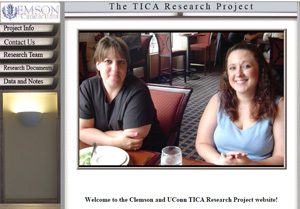 Each year the ever-popular IRA “What’s Hot in Literacy” survey provides a fascinating and often quite accurate prediction from literacy leaders about topics and trends in the field of literacy for the upcoming year (IRA Members, login to read the What's Hot survey here). As a literacy educator and researcher with a passion for supporting struggling readers online, this year’s annual survey left me pondering the mixed prospects for the future. The topic of digital literacies/new literacies is “Very Hot,” which is promising; yet the topic supporting struggling readers is “Not Hot,” a disturbing trend indeed.
Each year the ever-popular IRA “What’s Hot in Literacy” survey provides a fascinating and often quite accurate prediction from literacy leaders about topics and trends in the field of literacy for the upcoming year (IRA Members, login to read the What's Hot survey here). As a literacy educator and researcher with a passion for supporting struggling readers online, this year’s annual survey left me pondering the mixed prospects for the future. The topic of digital literacies/new literacies is “Very Hot,” which is promising; yet the topic supporting struggling readers is “Not Hot,” a disturbing trend indeed.
Why should we care? Our struggling readers are ones for whom online reading offers tremendous possibilities, but who could quite easily be left behind. We can’t afford to ignore struggling readers by allowing them to fall into a digital/new literacies gap, lagging behind their peers. It seems like a great time to draw attention to this issue and share ideas for educators seeking to support struggling students in online reading.
We know struggling readers need explicit strategy instruction. The following tips and resources offer educators effective ways to support online reading through strategy instruction.
Use Tried-and-True Methods
When teaching new online strategies for reading, the gold standard would be methods already designed for and tested with struggling readers. One of the only current methods that meet this criterion is Internet Reciprocal Teaching (IRT). IRT extends Reciprocal Teaching, an effective method for teaching reading in print-based texts, and adapts the model for online reading. The TICA Research Project provides an excellent starting point for resources including an overview of IRT, sample lessons, presentations and more. Since methods specifically tested and deemed effective with struggling readers are limited, we must also draw on other methods that are conceptually designed with research and best practices that we know support struggling readers. Online reading strategies like the SEARCHing framework as described in Reading Teacher and the (PST)2+iC3 online reading formula as Michelle Schira Hagerman and Amber White wrote in Reading Today, as well as strategy guides and sample lessons on websites like ReadWriteThink and Common Sense Media offer promise because they are built upon a foundation of strategies that are been shown to effectively support struggling readers.
Capitalize On Strategies Students Have Already Mastered In Print-Based Texts
Online reading requires new strategies, but also requires the use of many of the same strategies necessary for print-based texts. Strategies like summarizing, predicting, questioning, synthesizing, and evaluating text remain necessary in online reading environments. An easy way to support struggling readers is to start with strategies they have already mastered in print-based texts and explicitly teach them to generalize and transfer these strategies to online texts. The CAST Strategy Tutor provides a good starting point for educators seeking a tool to integrate strategy instruction into any web-based content. It is easily customizable for many grades and subjects.
Collaboration is Key
The most effective new methods for teaching online reading (including IRT) emphasize the importance of collaboration. Reading online is complex and requires students to use multiple strategies in flexible ways, drawing significantly on higher order thinking. Given the demands of online reading, it appears that peer collaboration benefits students in learning more strategies, applying them more effectively, and most importantly, allowing struggling readers to become active participants and even leaders in peer groups, as reported in Reading and Writing Quarterly. Therefore, when designing lessons that intentionally teach online reading, we should strongly consider building in opportunities for student collaboration.
As educators implement new methods for teaching online reading, an important final reminder is that many best practices for teaching strategies are relevant in any reading context:
- Start small—students should learn only a few strategies at a time.
- Model and “think aloud” as you introduce strategies.
- Allow time for practice, practice, practice.
- Provide opportunities for students to generalize and transfer strategies across multiple online reading sources.
 Kara Sevensma is an assistant professor of education at Calvin College. She can be contacted at sevensma@calvin.edu.
Kara Sevensma is an assistant professor of education at Calvin College. She can be contacted at sevensma@calvin.edu.